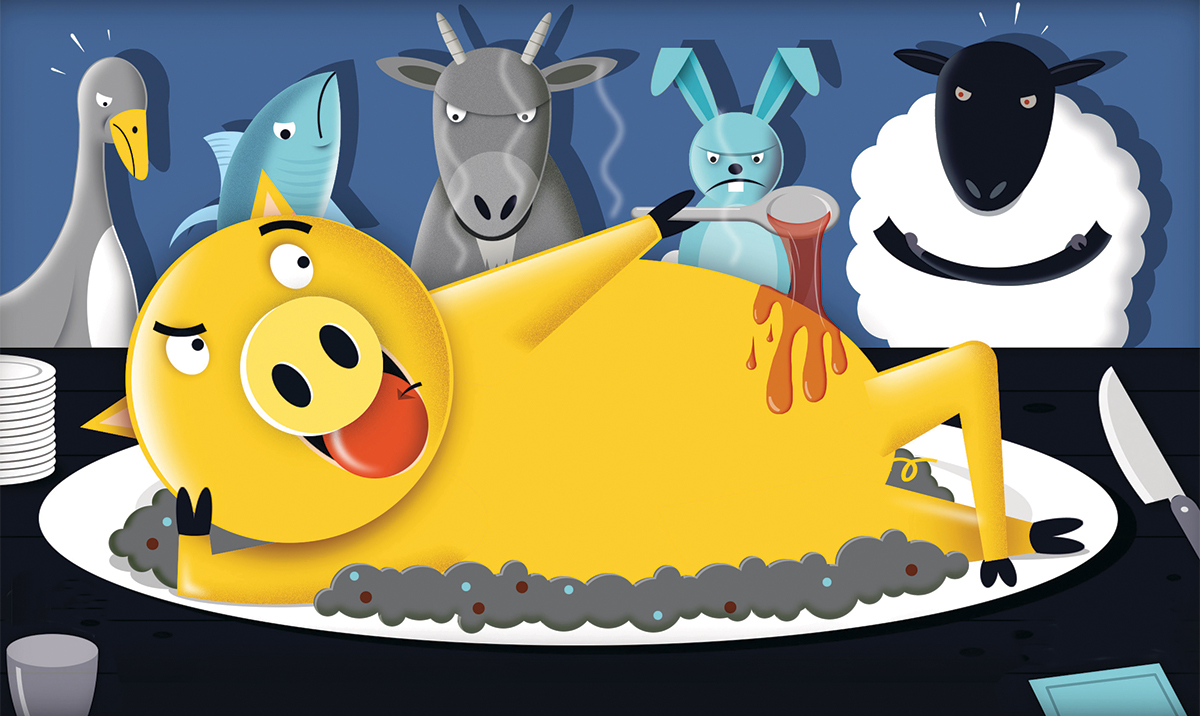Give the Pig a Break
This spring, I tasted my first pig eyeball. I was feasting on the cheeks of a porcine head when a tablemate offered to split the slimy orb with me. I’d sampled every other edible part of the animal (ears, heart, tail, and trotters), and now the eyeball was my final frontier. It turned out to be mildly gross, like bacon-flavored Jell-O.
After pausing to accept the cheers of my fellow diners, I thought back to all of last winter’s whole-hog dinners, suckling-pig feasts, and pork festivals (Cochon 555, Bacon and Beer). Boston has gone hog wild, it seems. And frankly, I’m pigged out.
It’s not that I don’t appreciate the trend of cooking and eating an entire animal from head to tail. After all, the current movement is fueled by a righteous cause: sustainability. Chefs have learned how to use every part of these delicious creatures, wasting almost nothing. But here’s the problem: By focusing on one species, we’re actually negating whatever good we’re doing. Eating too many of any one animal can deplete a wild population, and in the case of farmed species, raising too many can throw the environment out of whack.
And chefs are starting to catch on. “The pig is an amazing creature, but it’s a little overused,” says William Kovel, who at his forthcoming Cambridge restaurant, Catalyst, will showcase rabbit instead. Though tiny and lean, rabbits’ bodies are fully usable — something Kovel learned while working at Orrery in London, where he started winter days by skinning hares. He’s considering turning the hindquarters into a meat mousse to use in ravioli, and making rillettes of the kidneys.
“Bacon, pancetta, ribs,” rattles off Tavolo chef Nuno Alves, counting the many ways in which lamb can be prepared. The ribs, in particular, rival pork in flavor, but Alves uses every other part of the sheep, too. “The trimmings, neck, and heart go into sausage; the bones and the head go into stock.”
Terrestrial animals aren’t the only full-service option, either. La Morra chef-owner Josh Ziskin roasts bluefish whole during the summer. “A big fish can feed about 12 people,” he says.
Meanwhile, Rialto chef Jody Adams hosted her first whole-goat dinner this spring. Her team cooked the animal Sicilian style, frying the brains for a salad and using the tongue in an amuse-bouche. She’s also considering roasting goats at her annual wine barbecue this month.
But what’s really exciting is her next suggestion — root-to-blossom cooking. “Why not use the whole vegetable?” she asks. “Pea shoots, pea stems, the pods. It’s all edible.” Now that’s the kind of creativity that can give this movement new legs.
